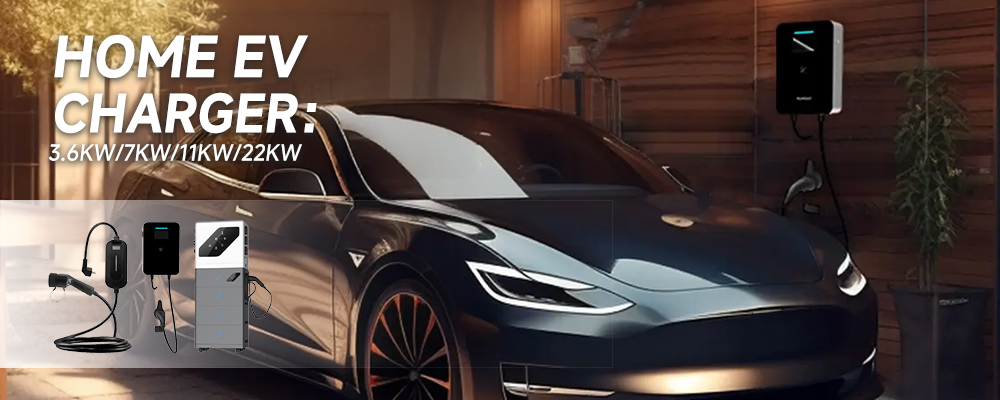Switching to an electric vehicle often brings questions about refueling: How does it work? What does it cost? Where can I charge? While saving money at the pump is a major draw, understanding the charging ecosystem is crucial. This involves knowing the different types of EV charging stations, the convenience of home EV charging stations, the necessity of public EV charging stations for longer trips, and the growing presence of commercial charging stations. We'll break down the charging levels, discuss installation essentials for your home car charger (like the common 7kW home charger), explore cost factors, touch on finding stations on the go, and look at the strategic deployment of commercial EV charging stations.
1. Home Charging: The Daily Driver's Convenience Hub (Home EV Charging Station)
Argument: The vast majority of EV charging happens overnight at home. It's the most convenient and often the most cost-effective method, allowing you to start each day with a full battery. Setting up a reliable home EV charging station fundamentally enhances the EV ownership experience, integrating charging seamlessly into your daily routine, much like charging your smartphone.
2. Understanding Charger Levels at Home (Home Car Charger, Wall-Mounted Charger)
Argument: Primarily, two levels are relevant for home charging:
Level 1: Uses a standard 120V household outlet. It's the slowest method, adding only 2-5 miles of range per hour, potentially taking 40+ hours (not just 8-12 as some brief guides suggest) for a full charge on many modern EVs. It requires no special installation but is often too slow for daily needs.
Level 2: Requires a dedicated 240V circuit (similar to an electric dryer or oven). This is the standard for home charging, significantly faster than Level 1 (adding 20-40 miles of range per hour). Level 2 chargers, often installed as wall-mounted chargers, are the practical choice for most EV owners needing regular, timely charging.
3. The 7kW Home Charger: Hitting the Sweet Spot
Argument: Within Level 2, the 7kW home charger (around 30-32A) is a popular choice globally. It offers a good balance between charging speed (capable of fully charging most EVs overnight in 4-10 hours) and the electrical demands placed on a home's system. Often, installing a 7kW unit is feasible without requiring expensive main electrical service upgrades, making it a cost-effective performance choice for many households.
4. Essential Home Electrical Check-Up Before Installation
Argument: Installing a Level 2 home EV charging station isn't just plug-and-play. A licensed electrician must assess your home's electrical panel capacity and perform a load calculation. This ensures your system can safely support the charger's continuous draw without overloading circuits, preventing potential hazards. This step is critical before any installation work begins. [External link placeholder: Link to Electrical Safety Foundation International or similar safety resource].
5. Safety First: Professional Installation is Key for Home Chargers
Argument: Due to the high, sustained power involved, installing a Level 2 home car charger requires adherence to strict safety standards and electrical codes. Professional installation ensures correct wiring gauge, proper breaker sizing (following the 80% rule for continuous loads), use of durable, appropriate-grade materials, and secure connections, mitigating risks like overheating and electrical fires. DIY installation is strongly discouraged.
6. The Public & Commercial Charging Network: Enabling Freedom & Opportunity
Argument: While home charging is primary, public EV charging stations and commercial charging stations are vital. Public stations, especially DC Fast Chargers along highways, enable long-distance travel. Commercial stations at workplaces, retail locations, hotels, etc., offer charging convenience during the day and can be a draw for customers and employees. Finding these stations is easier than ever with dedicated apps.
7. Navigating Public/Commercial Charger Types & Finding Stations
Argument: Out on the road, you'll mainly encounter Level 2 and Level 3 chargers:
Level 2 (Public/Commercial): Commonly found at hotels, shopping centers, workplaces. Offers charging speeds suitable for stays of several hours. Some locations might offer this charging for free as an amenity, though this is becoming less common.
Level 3 (DC Fast Charging): The fastest option (often 50kW to 350kW+), capable of adding significant range (potentially 80% charge) in 20-60 minutes. Found along major routes and busy hubs. Crucially, Level 3 chargers are not suitable or feasible for home installation due to their immense power requirements (480V+ DC) and prohibitive cost, requiring utility-level infrastructure.
Finding Stations: Apps like PlugShare, ChargePoint, EVgo, or integrated navigation systems in EVs are essential tools for locating nearby public EV charging stations or commercial EV charging stations, checking availability, charger type, and potential costs. [External link placeholder: Link to PlugShare or a major charging network].
8. Understanding Charging Costs on the Go
Argument: Public charging costs vary. Faster charging (Level 3) generally costs more than Level 2. Prices can be per kWh (kilowatt-hour), per minute, or a flat session fee. Importantly, the cost of electricity varies significantly by region and even time of day, impacting charging station pricing. Some networks offer subscription plans that might provide lower rates for frequent users, which can be beneficial for those who often travel long distances. While finding genuinely "free" charging is possible (e.g., some retail or workplace perks), it's usually Level 2 and shouldn't be relied upon as the primary charging method.
9. Commercial Charging Stations: A Strategic Business Decision
Argument: For businesses, installing commercial EV charging stations (Level 2 or sometimes Level 3) is increasingly seen as a valuable investment. It enhances brand image, meets sustainability goals, serves as an amenity for employees and customers, and can generate revenue. Understanding the hardware, installation costs (which vary widely), potential ROI, and available incentives is key to making a sound business decision. [External link placeholder: Link to a resource on commercial EV charging ROI or incentives, e.g., US Dept. of Energy AFDC].
Successfully integrating an EV into your life or business involves understanding the diverse charging landscape. Home EV charging stations, particularly Level 2 options like the 7kW home charger or other wall-mounted chargers, provide essential daily convenience and cost savings, provided they are installed safely and professionally after a proper electrical assessment. For travel beyond the home range, the network of public EV charging stations and commercial charging stations is critical. Utilizing apps to locate stations, understanding the differences between Level 2 and Level 3 (DC Fast Charging), being aware of variable costs influenced by electricity prices and charging speed, and exploring subscription options are all part of efficient on-the-go charging. For businesses, commercial EV charging stations offer strategic advantages. By navigating these options intelligently, users and businesses can fully embrace the benefits of electric mobility.

